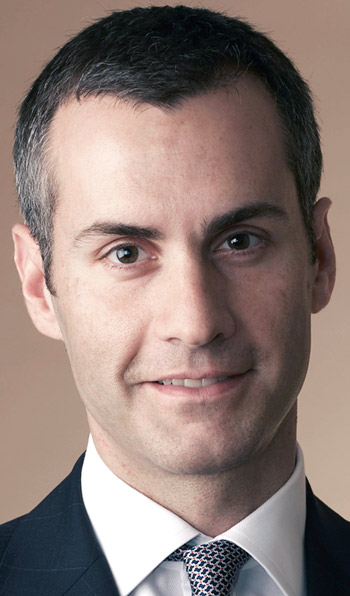

On 6 March 2017, ICANN's GDD finally responded to an applicant letter written on 14 August 2016 to the ICANN Board. This was not a response from the ICANN Board to the letter from 2016 but a response from ICANN staff. The content of this letter can best be described as a Null Response. It reminded the applicants that the Board had put the names on hold and was still thinking about what to do.
We all remember the nightmare of following the multiple versions of the "AGB" from the ICANN new gTLD program, and the time it took to get to the final version, which then took to allowing applicants to submit their new gTLD application, and which then took them to wait for their application to proceed... Welcome to version 0.5 of the next Applicant Guidebook.
 I don't know much about Copenhagen, except that Princess Mary of Denmark is really 'our' Princess Mary from Tasmania, Australia. The other thing I know is that it will be really cold. In terms of the ICANN meeting, there continues to be an element of dismay over the scheduling for this meeting, most notably reflected in a letter to ICANN's CEO from the GNSO Commercial Stakeholder Group. While it's good to get these issues on the table ... community should take ownership...
I don't know much about Copenhagen, except that Princess Mary of Denmark is really 'our' Princess Mary from Tasmania, Australia. The other thing I know is that it will be really cold. In terms of the ICANN meeting, there continues to be an element of dismay over the scheduling for this meeting, most notably reflected in a letter to ICANN's CEO from the GNSO Commercial Stakeholder Group. While it's good to get these issues on the table ... community should take ownership...
 There are now more than a thousand new Internet suffixes alongside "the originals" (not talking vampires here, but rather .COM et al). These additional web address endings are called "new gTLDs". Since Internet technical coordinator ICANN's 2012 call for applications for the creation of new gTLDs, and their roll-out starting in 2014 when suffixes such as .BARCLAYS (brand TLD), .NYC (geo TLD) and .SKI (generic TLD) became active, the question of another round of applications has been asked repeatedly.
There are now more than a thousand new Internet suffixes alongside "the originals" (not talking vampires here, but rather .COM et al). These additional web address endings are called "new gTLDs". Since Internet technical coordinator ICANN's 2012 call for applications for the creation of new gTLDs, and their roll-out starting in 2014 when suffixes such as .BARCLAYS (brand TLD), .NYC (geo TLD) and .SKI (generic TLD) became active, the question of another round of applications has been asked repeatedly.
 Before the righteous too much deride the "International Strategy of Cooperation on Cyberspace" emanating from China's cooperative one-party state, consider what progress it represents: a policy document that begins with principles, speaks often of cooperation, and clearly details the bilateral and multilateral approaches the country intends. By any measure, this is good practice from a keystone of the international system. And it offers a gift to those who would wish the Internet to be governed otherwise.
Before the righteous too much deride the "International Strategy of Cooperation on Cyberspace" emanating from China's cooperative one-party state, consider what progress it represents: a policy document that begins with principles, speaks often of cooperation, and clearly details the bilateral and multilateral approaches the country intends. By any measure, this is good practice from a keystone of the international system. And it offers a gift to those who would wish the Internet to be governed otherwise.
 Users scored an exciting victory over copyright-based censorship last month, when the Domain Name Association (DNA) and the Public Interest Registry (PIR), in response to criticism from EFF, both abruptly withdrew their proposals for a new compulsory arbitration system to confiscate domain names of websites accused of copyright infringement. But copyright enforcement was only one limb of the the DNA's set of Registry/Registrar Healthy Practices.
Users scored an exciting victory over copyright-based censorship last month, when the Domain Name Association (DNA) and the Public Interest Registry (PIR), in response to criticism from EFF, both abruptly withdrew their proposals for a new compulsory arbitration system to confiscate domain names of websites accused of copyright infringement. But copyright enforcement was only one limb of the the DNA's set of Registry/Registrar Healthy Practices.
 The non-contracted parties of the ICANN community met in Reykjavík last week for their annual intersessional meeting, where at the top of the agenda were calls for more transparency, operational consistency, and procedural fairness in how ICANN ensures contractual compliance. ICANN, as a quasi-private cooperative, derives its legitimacy from its ability to enforce its contracts with domain name registries and registrars...
The non-contracted parties of the ICANN community met in Reykjavík last week for their annual intersessional meeting, where at the top of the agenda were calls for more transparency, operational consistency, and procedural fairness in how ICANN ensures contractual compliance. ICANN, as a quasi-private cooperative, derives its legitimacy from its ability to enforce its contracts with domain name registries and registrars...
 In recent weeks, you may have seen several articles asking that "ICANN", the Internet Corporation for Assigned Names and Numbers, move more expeditiously to open up the next application window for new gTLDs. As one commenter wrote "Ask a Board member or ICANN staff when they expect the next application window to open, and they will inevitably suggest 2020 -- another three years away.
In recent weeks, you may have seen several articles asking that "ICANN", the Internet Corporation for Assigned Names and Numbers, move more expeditiously to open up the next application window for new gTLDs. As one commenter wrote "Ask a Board member or ICANN staff when they expect the next application window to open, and they will inevitably suggest 2020 -- another three years away.
 Let's be clear: right now, any statements on when (or even if) a follow-up round of new gTLD applications might happen are pure conjecture. The first round closed on April 12, 2012. Since then, the pressure has been increasing for ICANN to actually live up to the guidebook premise of launching "subsequent gTLD application rounds as quickly as possible" with "the next application round to begin within one year of the close of the application submission period for the initial round." But that deadline is clearly not going to be met.
Let's be clear: right now, any statements on when (or even if) a follow-up round of new gTLD applications might happen are pure conjecture. The first round closed on April 12, 2012. Since then, the pressure has been increasing for ICANN to actually live up to the guidebook premise of launching "subsequent gTLD application rounds as quickly as possible" with "the next application round to begin within one year of the close of the application submission period for the initial round." But that deadline is clearly not going to be met.
 The choices for consumers and business in Europe to get themselves online have never been so great. Social media, apps and blogsites all have made a lasting impression, and we are now in an increasingly crowded market with the addition of hundreds of new gTLDs. So how has all this affected growth and market shares among domain names in Europe?
The choices for consumers and business in Europe to get themselves online have never been so great. Social media, apps and blogsites all have made a lasting impression, and we are now in an increasingly crowded market with the addition of hundreds of new gTLDs. So how has all this affected growth and market shares among domain names in Europe?